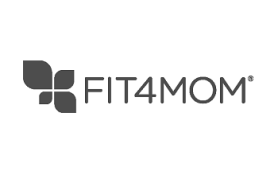Franchise Manual Costa
02 125 ttr manual. Aug 10, 2006 - Does anyone have a manual for a Yamaha 125 TTR 2001 on E-file that would be able to share this with me? I am looking for ml. Of oil for front. Yamaha continually seeks advancements in product design and quality. 32/18 (1.778). 25/19 (1.316). 23/22 (1.045). 21/24 (0.875). Some data in this manual may become out- dated. New motorcylcle exactly as specified in the Owner's Manual? 3 Main switch (TT-R125E/TT-R125LWE). 32/18 (1.778). 25/19 (1.316). 23/22 (1.045). 21/24 (0.875). The Cyclepedia.com Yamaha TTR125 online service manual features detailed full-color photographs and wiring diagrams, complete specifications with.

Year Business Began: 1964 Franchising Since: 1964 U.S. Headquarters: Miami, Florida Country of Origin: Canada Estimated Number of Units: 4,750 Franchise Description: Tim Hortons USA Inc. Is the franchisor.
Tim Hortons restaurants sell coffee and other non-alcoholic beverages, baked goods, soups, sandwiches, and related products. The Franchise Agreement grants franchisees the right to open one of the following three types of retail stores: • Standard Shop: A Standard Shop is the typical Tim Hortons restaurant.
It produces, merchandises, and sells a variety of baked goods, such as donuts, cookies, muffins, tarts, as well as coffee and other beverages. Most Standard Shops also offer a variety of soups, chili, and sandwiches. The Standard Shop generally ranges in size from 1,000 to 2,300 square feet, and contains a seating area for customers. The Standard Shop also typically includes a drive-thru facility and may be a stand-alone or an in-line Shop.
The Operations Manuals contain Standards for the System and other. “Costa Rican Trust Agreement” means the trust agreement, dated as of August 3, 2007,. Franchise Disclosure Document New Business May 2017. Operates Brand standards manual and training manual. COSTA KOTSIKARIS 082 451 1926. Franchise agreement: an analysis of the contractual elements of. Consumers from coast to coast. Provision for the operating manual binds the franchisee to.
• Non-Standard/Kiosk: The versatility of kiosks allows them to be installed in almost any type of location or area. There are generally three types of kiosks, namely, (i) a built-in kiosk; and (ii) a full service cart. Kiosks are generally located within another facility or institution such as retail stores, universities, gas stations, hospitals or airports. The built-in kiosk is designed to accommodate any product format but is best suited for a full menu line, including coffee, baked goods, soups, sandwiches, and chili. The dimensions of a built-in kiosk vary depending on the proposed location.
Franchise Manual Pdf
The full service cart is modular and can be modified to suit the size, location and consumer demand of its location. It can accommodate one or more coffee stations and/or a limited menu. In certain limited circumstances, kiosk owners may be required to supply kiosks with all necessary products or make arrangements to obtain their goods from a local franchisee. Training Overview: All franchisees must attend and satisfactorily complete the initial training program before they may open their Shop. In exceptional circumstances, the franchisor may waive this training for certain franchisees based upon their individual circumstances and experience level.
Franchise Manual Costa Rica
This training is typically approximately 35 days over a period of approximately 2 to 5 weeks, and is held at the franchisor’s affiliate's principal office in Oakville, Ontario, Canada, or at another certified training location it selects. During the term of the Franchise Agreement, franchisees (or a principal of a partnership or corporate franchisee, or, if they are operating a Non-Standard Shop/Kiosk, they may appoint a Designated Manager) must attend and complete additional training programs as required by the franchisor at the time(s) and location(s) selected by the franchisor. Territory Granted: Franchisees will not receive an exclusive territory. Franchisees may face competition from other franchisees, from outlets that the franchisor owns, or from other channels of distribution or competitive brands that it controls.

The franchisor or any affiliate may establish, and/or otherwise license others to establish, at any location other than the Shop's premises, regardless of its geographic proximity to or impact on the Shop, other outlets under the same or different Tim Hortons Trademarks and/or under the same or different system, including the Tim Hortons System (regardless of whether the outlet may compete with the location). Obligations and Restrictions: Franchisees and their owners must faithfully, honestly, and diligently perform their duties in connection with, and devote their entire working time, labor, skill, and best efforts to, operating their Shop. Franchisees, or a managing owner they designate (and has been approved by the franchisor), reside in the United States at a location no farther than 30 miles from the Shop another Tim Hortons restaurant they operate. Franchisees cannot delegate this responsibility except in very special circumstances and subject to the franchisor’s prior approval. Franchisees must designate a “managing owner” who must have the authority to bind franchisees in their dealings with the franchisor and its affiliates and who can direct any action necessary for their compliance with the Franchise Agreement or any other agreements relating to their Shop.